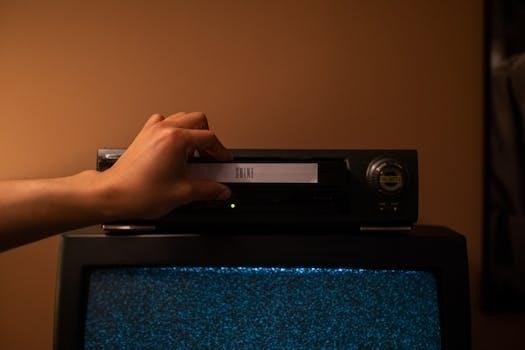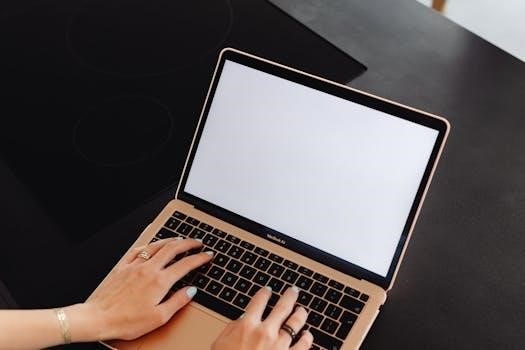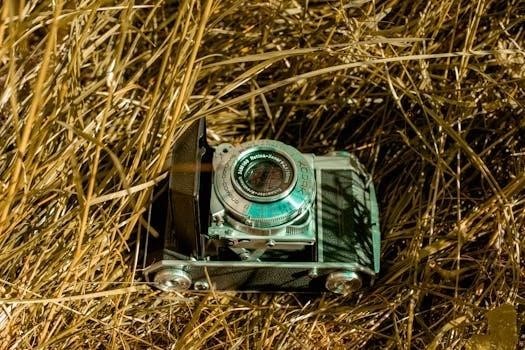The JBL Charge 3 is a portable Bluetooth speaker offering high quality sound. It features a waterproof design and JBL Connect functionality. This device provides up to 20 hours of music playtime; It also has a noise and echo-cancelling speakerphone; Furthermore‚ it can recharge phones and tablets.
What’s in the Box
The JBL Charge 3 packaging typically includes the main speaker unit itself‚ carefully nestled to prevent damage during transit. You will find a USB cable included; this is for charging the speaker’s internal battery‚ and may be used to connect to a power source. The specific type of USB cable is usually a standard micro-USB to USB-A. There should also be a Quick Start Guide. This guide provides essential instructions for setting up and using the speaker for the first time. It may also include details on button functions‚ Bluetooth pairing‚ and basic troubleshooting steps. Sometimes‚ the packaging includes additional information‚ such as warranty details or safety precautions‚ but the primary components are the speaker itself‚ the charging cable‚ and the quick start guide. The box is designed to be functional and protective.
JBL Charge 3 Key Features
The JBL Charge 3 boasts several key features that make it a popular portable speaker. First‚ its waterproof design with an IPX7 rating allows it to withstand splashes and submersion in water. This makes it ideal for outdoor use. It has a 6000mAh battery‚ providing up to 20 hours of playtime‚ ensuring extended listening sessions. The speaker also functions as a power bank‚ allowing you to charge other devices via USB. The JBL Connect feature enables you to wirelessly link multiple JBL Connect-compatible speakers together. It has a built-in microphone for hands-free calling. Additionally‚ the speaker has dual 50mm drivers with a total output of 20 watts‚ delivering powerful sound. The device also supports Bluetooth version 4.1 for wireless streaming and has an AUX input for wired connections.

JBL Charge 3⁚ Operation and Functionality
Operating the JBL Charge 3 is straightforward‚ including powering on‚ and pairing via Bluetooth. The JBL Connect feature allows connection to multiple speakers. It is important to note the waterproofing precautions for safe use near liquids. It also includes using the speaker as a power bank.
Powering On and Pairing via Bluetooth
To begin using your JBL Charge 3‚ first locate the power button. Press and hold this button to power the speaker on. Once powered on‚ the speaker will typically enter pairing mode automatically‚ indicated by a flashing light. Next‚ access the Bluetooth settings on your smartphone‚ tablet‚ or other Bluetooth-enabled device. Look for “JBL Charge 3” in the list of available devices. Select “JBL Charge 3” to initiate the pairing process. Once successfully paired‚ the flashing light on the speaker will become solid‚ confirming the connection. You can now stream audio wirelessly from your connected device to the speaker. If the pairing is not automatic‚ you might need to press the Bluetooth button on the speaker to activate pairing mode. Ensure your device’s Bluetooth is enabled and discoverable during the pairing process. The speaker will remember paired devices for easier reconnection in the future. If you encounter issues‚ try turning both devices off and on again‚ then repeating these steps.
Using the JBL Connect Feature
The JBL Charge 3 comes equipped with JBL Connect‚ a feature that allows you to wirelessly link multiple compatible JBL speakers together. To utilize this feature‚ first ensure that all the speakers you wish to connect are JBL Connect compatible. Begin by powering on all the desired speakers. Locate the JBL Connect button on each speaker; it is usually found on the top or side of the unit. Press the JBL Connect button on each speaker to initiate the pairing process. Once the speakers are successfully linked‚ they will play the same audio source simultaneously. This feature allows for a more immersive and powerful sound experience. Note that the pairing process may take a few moments to complete. If you experience difficulty in connecting‚ try powering off all the speakers‚ then powering them on again before repeating the pairing process. JBL Connect is a great way to expand your audio system without needing wires or complex setup procedures. The range of the connection is limited‚ so keep speakers relatively close.
Waterproofing and Precautions
The JBL Charge 3 boasts an IPX7 waterproof rating‚ providing protection against water immersion. However‚ it is crucial to take certain precautions to maintain its waterproof integrity. Before exposing the speaker to water‚ always ensure that all cable connections are disconnected. This includes the charging cable and any auxiliary input cables. Additionally‚ make sure the cap that covers the charging port is tightly closed. Failure to do so may result in water damage to the speaker. It is extremely important to note that the JBL Charge 3 should not be exposed to water while it is charging. Charging the device while wet can lead to permanent damage. The IPX7 rating means it can withstand being submerged in water for a limited time and depth‚ but it is not designed for continuous submersion. Therefore‚ avoid prolonged exposure to water‚ such as keeping it submerged for long periods. These precautions are necessary to ensure the longevity and proper functionality of your waterproof speaker.

JBL Charge 3⁚ Technical Specifications and Details
The JBL Charge 3 features two 50mm drivers‚ delivering 20 watts of power. It uses Bluetooth 4.1 for wireless streaming. The device also includes a 6000mAh battery. This provides a long lasting power supply. It also has a USB port for charging other devices.
Speaker Specifications and Performance
The JBL Charge 3 boasts a robust audio setup‚ featuring two 50mm drivers that work in tandem to deliver a rich and immersive sound experience. These drivers are engineered to produce a total rated power of 20 watts‚ ensuring that the speaker can fill a room with clear and powerful audio. The frequency response of the speaker is carefully tuned to provide a balanced sound profile‚ with deep bass‚ clear mids‚ and crisp highs. This makes it suitable for a wide range of musical genres and audio content. The speaker’s design also incorporates passive radiators that enhance the bass response‚ giving it a more substantial and impactful low-end. The overall sound quality is further enhanced by the speaker’s acoustic design‚ which minimizes distortion and maximizes clarity even at higher volume levels. This makes it an excellent choice for both indoor and outdoor listening environments. The speaker also features a built in noise and echo-cancelling speakerphone‚ allowing for clear and hands-free calls.
Battery Capacity and Charging
The JBL Charge 3 is equipped with a substantial 6000mAh lithium-ion battery‚ designed to provide extended periods of playback. This robust battery capacity allows users to enjoy up to 20 hours of continuous music on a single full charge‚ depending on the volume level and type of audio content being played. The speaker also functions as a power bank‚ enabling users to charge other devices such as smartphones and tablets via its USB port‚ making it a versatile companion for travel and outdoor activities. The charging process is straightforward‚ and the speaker can be fully recharged in approximately 3 to 4 hours using the provided USB cable and a suitable power adapter. The battery status is indicated by a series of LED lights on the speaker‚ providing a quick visual check of the remaining power level. To maintain battery health it is not recommended to expose the JBL Charge 3 to water while charging.
Connectivity Options
The JBL Charge 3 offers versatile connectivity options to cater to various user needs. The primary method of connection is through Bluetooth version 4.1‚ ensuring a stable and efficient wireless connection with compatible devices. This allows for seamless music streaming from smartphones‚ tablets‚ laptops‚ and other Bluetooth-enabled gadgets. The speaker also supports a wired connection via a 3.5mm auxiliary input‚ providing an alternative option for devices that do not have Bluetooth capabilities or for situations where a wired connection is preferred. Furthermore‚ the JBL Charge 3 includes a USB port‚ which‚ while primarily used for charging external devices‚ also facilitates firmware updates when connected to a computer. This array of connectivity options makes the JBL Charge 3 adaptable to a wide range of scenarios‚ ensuring that users can easily connect their devices and enjoy their audio content regardless of their preferred method of connection.

JBL Charge 3⁚ Additional Information
The JBL Connect app allows for speaker updates. Troubleshooting and support are available to assist users with any issues. Users can download the JBL Charge 3 manual online for detailed information. This section provides resources for optimal use.
JBL Connect App and Firmware Updates
The JBL Connect app is an essential tool for enhancing your JBL Charge 3 experience. This application allows users to manage and update their speaker’s firmware‚ ensuring optimal performance and access to the latest features. The app will notify you when a new firmware update is available for your device. Keeping your firmware up-to-date is crucial for maintaining the speaker’s stability and compatibility with various devices. Through the JBL Connect app‚ you can easily check for updates and install them wirelessly‚ streamlining the maintenance process. Moreover‚ the app offers additional functionalities that can improve your overall listening experience. These features may include customized audio settings‚ allowing users to fine-tune the speaker’s output to their preference. The app also facilitates the connection of multiple JBL Connect-compatible speakers. This allows for an amplified sound experience by creating a synchronized audio system. This feature is especially useful for larger gatherings or outdoor settings. Using the JBL Connect app regularly will ensure that your JBL Charge 3 is always running at its best.

Troubleshooting and Support
Encountering issues with your JBL Charge 3 is not uncommon‚ and understanding the troubleshooting steps can resolve most problems. If your speaker isn’t powering on‚ ensure it is charged using a suitable power source. Problems with Bluetooth pairing can often be solved by resetting the speaker’s Bluetooth settings or restarting both the speaker and your device. If your JBL Charge 3 isn’t connecting to other JBL Connect compatible devices‚ make sure all devices are within range and that the JBL Connect buttons on each device are pressed correctly. The sound quality could be affected by external factors. Check that there are no obstructions or physical damage to the speaker. For persistent problems‚ consider a firmware update via the JBL Connect app‚ as this may fix underlying software issues. Should these steps not resolve the issue‚ detailed user manuals are available online and provide detailed troubleshooting guidance. There are also many user forums and expert Q&A sections where you can seek help and advice from experienced users‚ who have encountered similar problems. In case of a hardware issue‚ it’s recommended to consult the JBL customer support for specific guidance.
JBL Charge 3 Manual Download
Accessing the official JBL Charge 3 manual is a straightforward process‚ essential for users seeking detailed guidance on the speaker’s functions and troubleshooting. The manual is typically available for download in PDF format. You can find it on the official JBL website within the support section of the product page for the JBL Charge 3. These manuals provide comprehensive instructions including how to set up‚ operate‚ and maintain your speaker. They also cover important topics such as pairing with Bluetooth devices‚ using the JBL Connect feature‚ understanding LED indicators‚ and ensuring waterproof capabilities. These documents are beneficial for troubleshooting issues. They also contain safety precautions and other essential details. Furthermore‚ several third-party websites offer the JBL Charge 3 manual for download. However‚ it is always safest to download from the official source to ensure you have the most accurate and up-to-date version. The manual can be especially useful for understanding all the technical details of your device.



